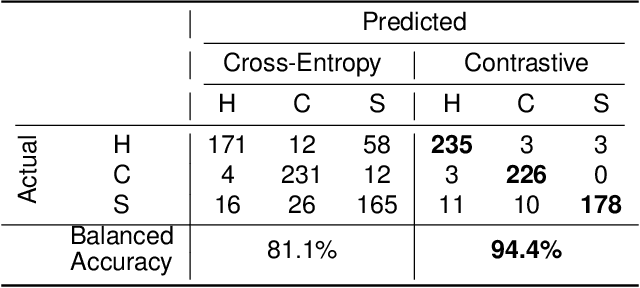Contrastive Feature Learning for Fault Detection and Diagnostics in Railway Applications
Paper and Code
Aug 28, 2022



A railway is a complex system comprising multiple infrastructure and rolling stock assets. To operate the system safely, reliably, and efficiently, the condition many components needs to be monitored. To automate this process, data-driven fault detection and diagnostics models can be employed. In practice, however, the performance of data-driven models can be compromised if the training dataset is not representative of all possible future conditions. We propose to approach this problem by learning a feature representation that is, on the one hand, invariant to operating or environmental factors but, on the other hand, sensitive to changes in the asset's health condition. We evaluate how contrastive learning can be employed on supervised and unsupervised fault detection and diagnostics tasks given real condition monitoring datasets within a railway system - one image dataset from infrastructure assets and one time-series dataset from rolling stock assets. First, we evaluate the performance of supervised contrastive feature learning on a railway sleeper defect classification task given a labeled image dataset. Second, we evaluate the performance of unsupervised contrastive feature learning without access to faulty samples on an anomaly detection task given a railway wheel dataset. Here, we test the hypothesis of whether a feature encoder's sensitivity to degradation is also sensitive to novel fault patterns in the data. Our results demonstrate that contrastive feature learning improves the performance on the supervised classification task regarding sleepers compared to a state-of-the-art method. Moreover, on the anomaly detection task concerning the railway wheels, the detection of shelling defects is improved compared to state-of-the-art methods.
 Add to Chrome
Add to Chrome Add to Firefox
Add to Firefox Add to Edge
Add to Edge